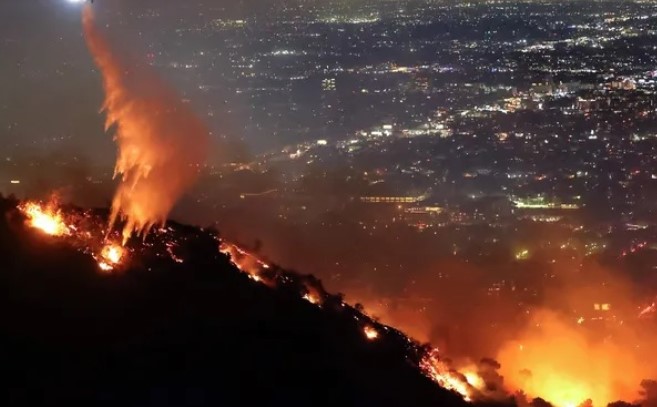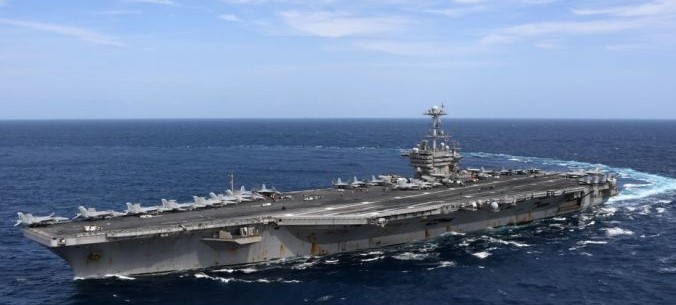STRATEGIC ASSESSMENT. As the world marks the somber one-year anniversary of Russia’s illegal invasion of Ukraine on February 24, 2022 (or what some might regard as the ninth anniversary, following Russia’s invasion of Crimea on February 27, 2014), the war has, in many ways, reshaped geopolitical dynamics that underpin the global order. President Joseph Biden’s visit to Kyiv earlier this week and a subsequent speech in Warsaw are emblematic of the reinvigorated Western alliance that has shown resolve and determination in supporting Ukraine against Russian aggression. Yet, nothing about how this war evolves is preordained and the NATO alliance will be challenged to maintain current levels of cohesion and enthusiasm in the face of a brutal and protracted war of attrition. A speech this week by Russian leader Vladimir Putin suggests that Moscow is prepared for a long war, hoping that Western unity will begin to unravel the longer the war grinds on. Russia could still rebound from what has been a moribund military campaign and draw benefits from the private military companies boosting its military capacities. Many comparisons to a “new Cold War” may be overwrought, but there are some worrisome parallels. Russia’s suspension of the New START Treaty has led to growing concern over nuclear arms control. Sweden and Finland are set to join NATO as new members and Russian designs on countries like Moldova are reminiscent of Soviet-era destabilization efforts aimed at working through proxy campaigns. Moreover, the war in Ukraine takes place against the backdrop of increased political polarization and extremist narratives used by sitting politicians in many states, stoked in large part by adversarial disinformation campaigns.
Rumors of a Chinese-backed diplomatic initiative have failed to garner serious attention.
Recent statements about a “rock solid” relationship between Beijing and Moscow advancing a “comprehensive strategic partnership” could make it difficult for China to portray itself as an honest broker in potential future peace negotiations. In Washington, the focus has been on warning China not to provide Russia with lethal weapons and other offensive military support. By any metric, Russia’s military has underperformed over the past year, struggling to gain and hold ground while also suffering massive casualties, with some estimates suggesting between 100,000- 200,000 killed or wounded. In addition, the Russian military has lost thousands of pieces of armored equipment, squadrons worth of fighter jets and helicopters, and depleted significant amounts of precision strike munitions and artillery shells. Accordingly, Moscow has reportedly turned to help from Iran, which has supplied drones, and North Korea, which has offered rockets and other weapons.
The impact on the global order – and even on citizens in faraway states – has been profound. The United States now finds itself squarely aligned against the four countries in what used to be labeled by the U.S. Department of Defense as the “4+1 framework,” which laid out a mission set that included four adversaries (China, Iran, Russia, and North Korea) and one broader category of transnational terrorism and violent extremism. As a result of Russia’s invasion of Ukraine, and possible future Chinese aggression in Asia, Washington has stepped up cooperation with Japan and South Korea, while also building new security arrangements in the Indo-Pacific through AUKUS, the ‘Quad,’ and additional military bases in the Philippines. American support to Taiwan is now a top-tier national security issue in the U.S. Congress, after more than a decade and a half of struggling to reduce commitments in the Middle East and “pivot to Asia.” In Europe, Germany has become a crucial lynchpin in security assistance to Ukraine, jettisoning its longstanding foreign policy of Ostpolitik, engaging with Russia through trade and diplomacy in the hopes of catalyzing change. Central and Eastern European countries are playing a prominent role in supporting Ukraine politically, economically, and militarily, as well as hosting thousands of Ukraine’s displaced population. Many states have had to confront the implications on their own national priorities, including food supplies and prices, public sentiment, and on defense and diplomatic priorities.
Some nations continue attempting to hedge their bets, straddling a middle ground to avoid alienating either the West or Russia and its allies, much as they did during the Non-Aligned Movement. U.S. withdrawals in places like Afghanistan and northeast Syria have also raised questions about the long-term reliability of American support, particularly as the emphasis is increasingly on “partner-led, US enabled” approaches. India and Saudi Arabia for example, have chosen to tread carefully and engage with all parties, while countries throughout the Global South, including many in sub-Saharan Africa, have favored Moscow, welcoming the diplomatic, development, and defense support that often comes without any additional expectations or obligations in the realms of governance and human rights. Africa, the Middle East, and Central Asia remain pivotal as great and middle powers compete to shape the global economy, particularly following the COVID-19 pandemic, the war in Ukraine, and shifting trends in energy exploration and development. Supply chains are also in flux, as Western nations seek to reduce their dependence on Russian energy and Beijing strives to become more self-sufficient, including technologically, and others step in to try and address shortfalls or curry diplomatic favor. One possible byproduct of the war in Ukraine is the acceleration of a multipolar international system to a bipolar world, with China and the United States staking out opposite sides. Foreign policy expert Ali Wyne has described the dynamics as “strained cohabitation,” correctly noting that a complete decoupling is neither desirable nor likely in the immediate future. Nevertheless, if China does go on to supply more lethal weaponry to Russia, relations between Beijing and Washington will deteriorate further, making the risks of miscommunication even more dire and increasing the likelihood of escalation between the world’s two biggest superpowers. Russia’s invasion has also challenged the bedrock principles of the rules-based international system by seeking to change the political borders of a sovereign state through aggression. A long and protracted war in Ukraine could also serve to encourage autocratic rulers everywhere, and distract policymakers in key capitals from addressing other conflicts and concerns globally, such as the ongoing conflict and instability in places like Syria, Yemen, Myanmar, Afghanistan, and the Sahel, for example, and where Russia has sought to increase its influence at the expense of the West. The long-term impacts of failing to resolve the conflicts and humanitarian crises will also affect the strategic relationships and power dynamics of states as the promise of Western military influence and soft power is tested on the battlefields of Ukraine.





